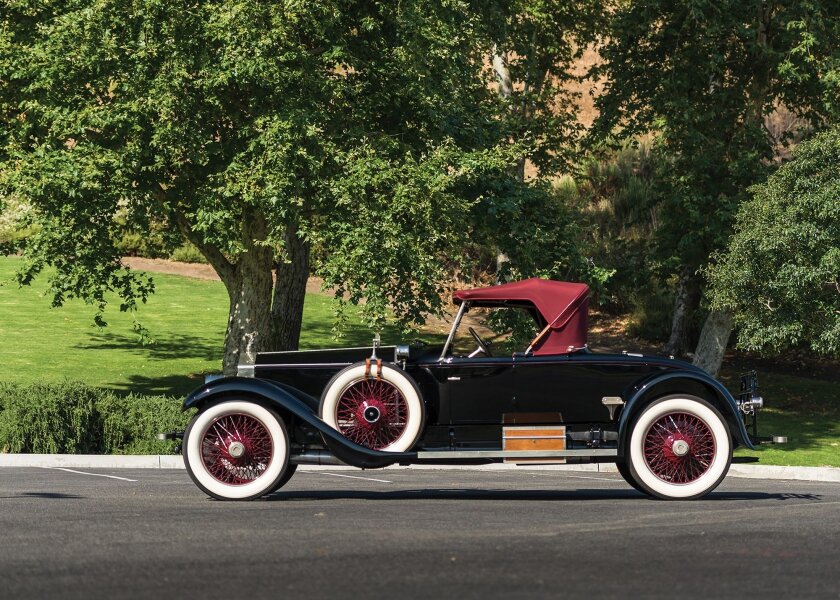1932 Marmon Sixteen
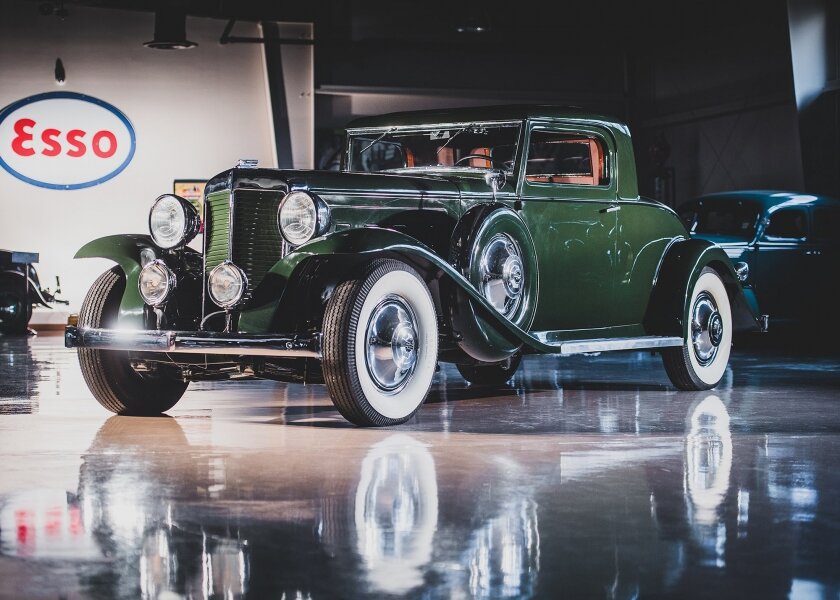
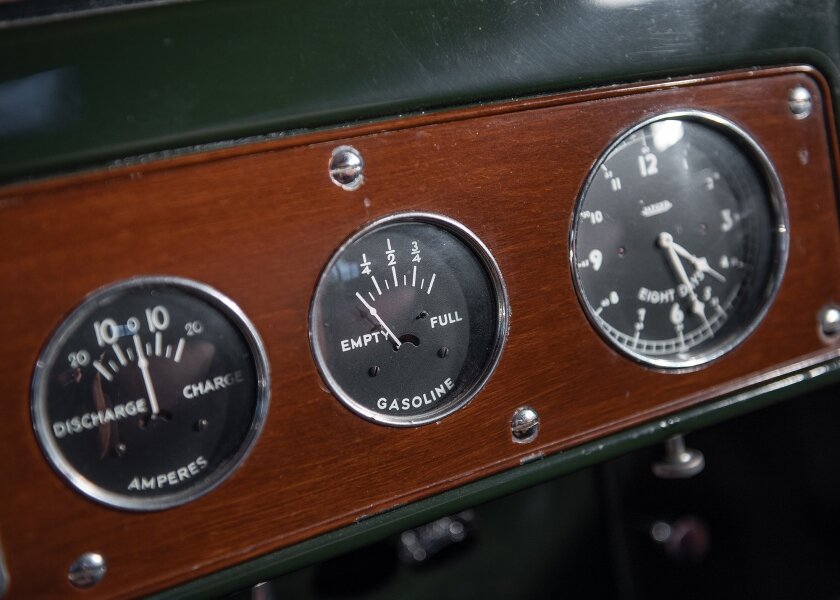
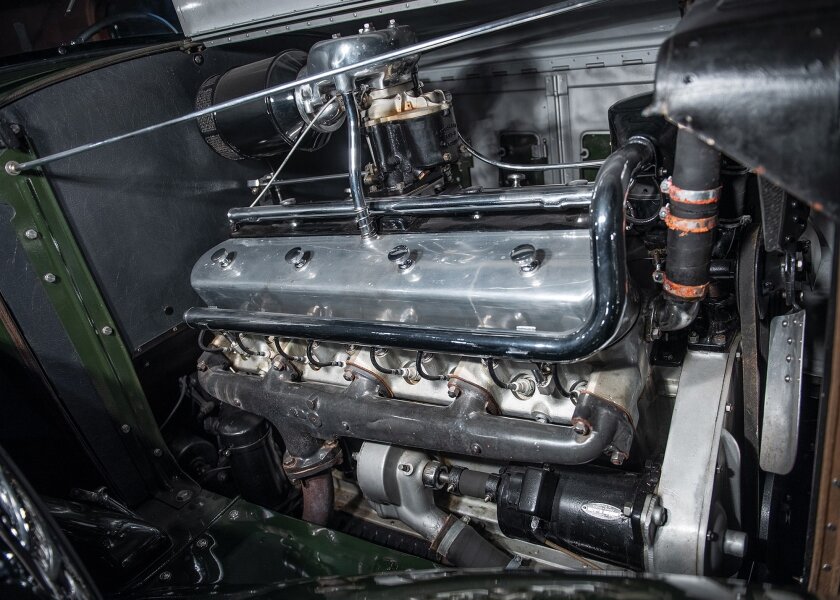
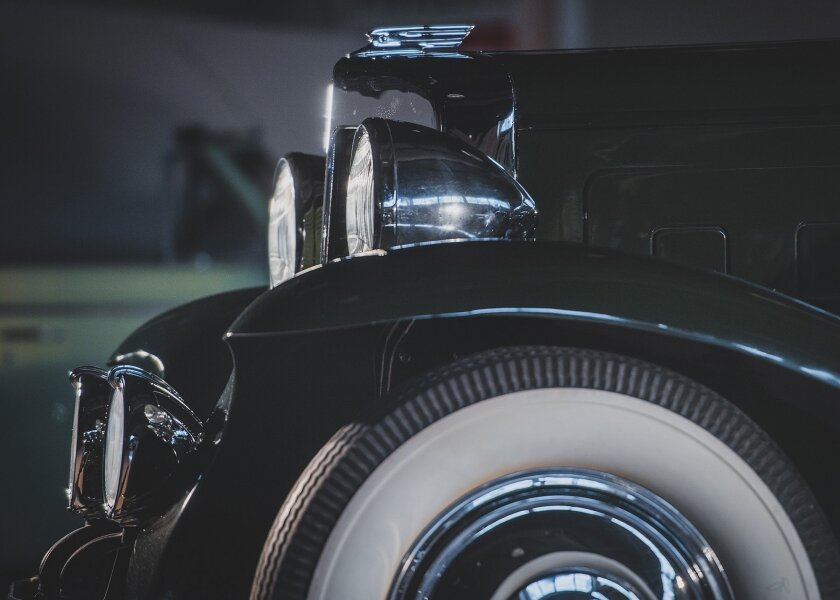
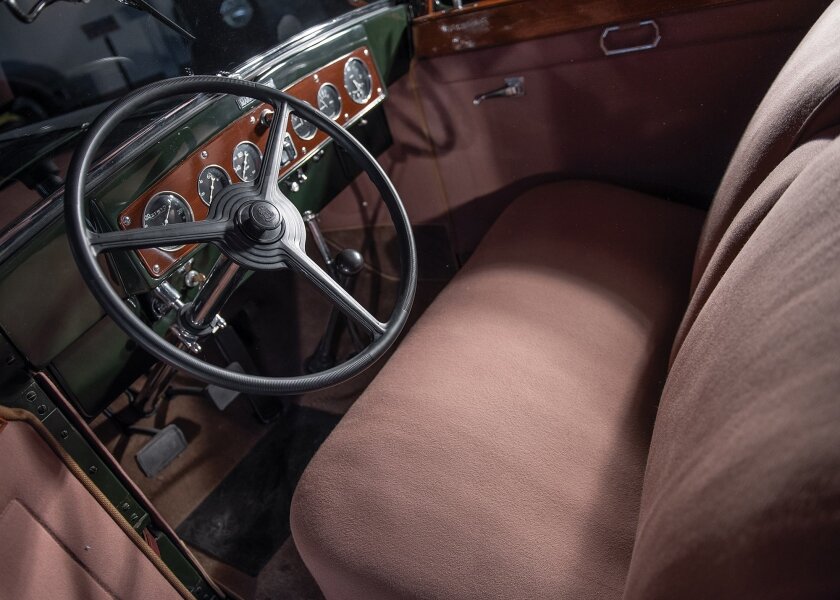
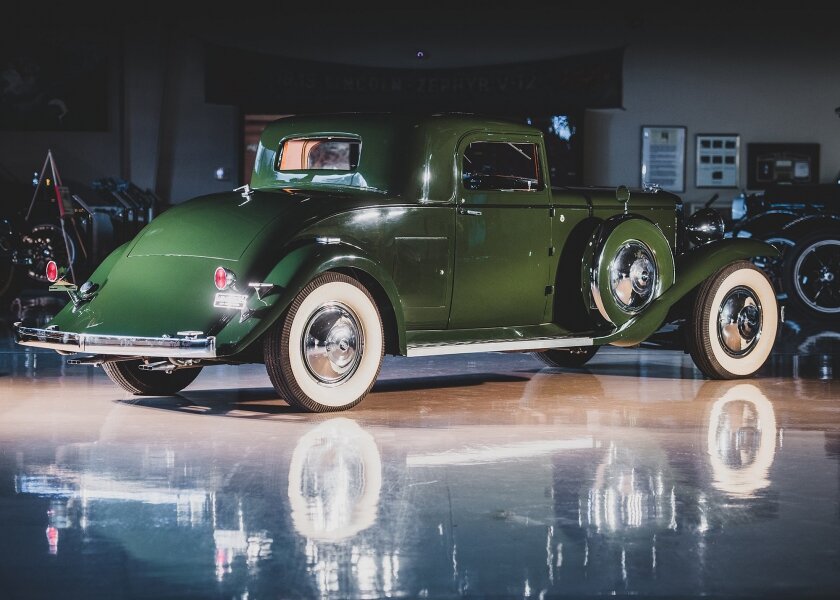
Specifications
Engine: 491 C.I. V16
Horsepower: 200 @ 3400 RPM
Torque: 400 lbs./ft.
Top Speed: 105 MPH
Weight: 5090 lbs.
Suspension: Rigid axles, semi-elliptic springs, 2-way hydraulic shock absorbers
Brakes: Duo-Servo with vacuum booster, 16-in. drums
Howard Carpenter Marmon was the son of an Indianapolis manufacturer of milling machinery. Enamored of all types of machinery, he built a car of his own design, completed in 1902. Remarkable for its use of full pressure lubrication, it had an air-cooled powertrain with no universal joints, made possible by mounting the running gear on a separate subframe. By 1909, Marmon was in full production of water-cooled cars.
In 1926, Howard Marmon began work on his masterpiece, a sixteen-cylinder luxury car. The heart of the new model was a lightweight, all-alloy 45-degree V-16 of 491 cu. in. Its operation was so smooth that a light flywheel was possible, which in turn facilitated rapid acceleration. The valve gear was carefully designed to be compact and well lubricated, making it nearly silent.
Magnificent though it was, the Marmon Sixteen was not ready for production until early in 1931. The total for 1932 was just 10 percent of an underwhelming 1,365 total cars. However, it is not hard to understand with just 86 cars of all types sold that year, Marmon was in receivership by the first of May.
Known ownership of this Marmon dates back to 1955. In the spring of 1999, the car was purchased by Philip Bray of Grosse Ile, Michigan. Bray entered the car in CCCA competition, winning First Primary at a Michigan Grand Classic in 2001. It subsequently earned Senior honors in 2002 and Premier the same year, with 99.75 points. Raymond Drake, of Cripple Creek, Colorado, bought it from Bray in 2004, and it was acquired by the Burdick Collection in 2007.
Like all Marmon cars, it easily manages to be imposing without appearing flashy. Painted green, with an understated beige interior, it has metal-covered dual side-mount spares and Firestone Deluxe Champion wide whitewall tires. Senior Trippe driving lights nicely compliment the C.M. Hall Depress Beam headlamps. The rumble seat is upholstered in correct pleated leather and features arm rests. There is a golf bag door on the right side. Mileage showing is slightly more than 31,000, commensurate with reported sightings during its history. With its known history, and original engine and body, this Sixteen is among the best of its small constituency of survivors.











